
by Kathryn Brenne

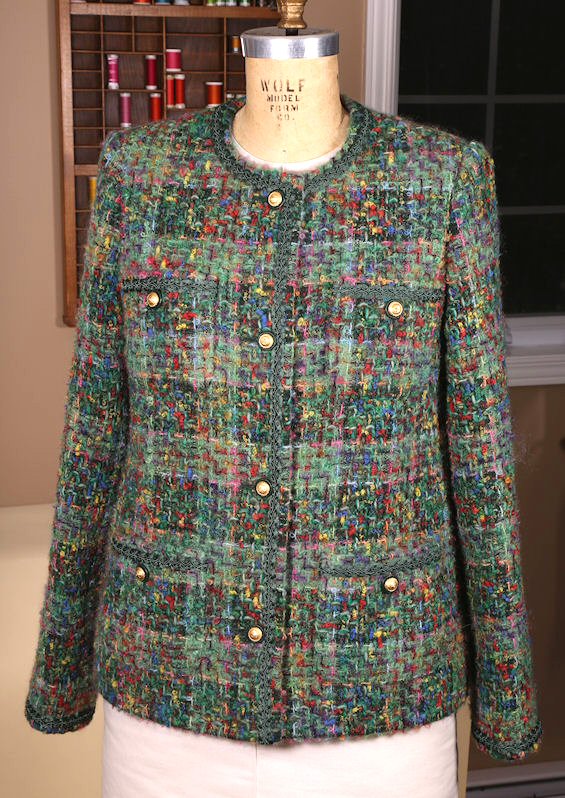
Over the years the cardigan jacket has been reinterpreted in different lengths and fit with various collars. Here though, we will focus on an easy fitting, collarless jacket. My sample garment has a loose, boxy shape with very few seams, but it is also possible to use the techniques discussed here to make a more fitted garment with more seams.
The following patterns are all collarless jacket patterns that are in print as I write this article. Vogue 8893 is an unlined jacket but for the technique that we are going to use, this pattern can be adapted. Claire Shaeffer's Vogue 8804 has a three-piece sleeve similar to the one found on my vintage couture jacket.
For a more fitted style choose a pattern with princess seams, which will provide more fitting opportunities. I suggest either Vogue 7975, which has princess seams coming from the shoulder, or McCalls 6441 which has princess seams coming from the armhole. No matter which pattern you choose, always make a trial muslin first to test the fit and style of the garment.
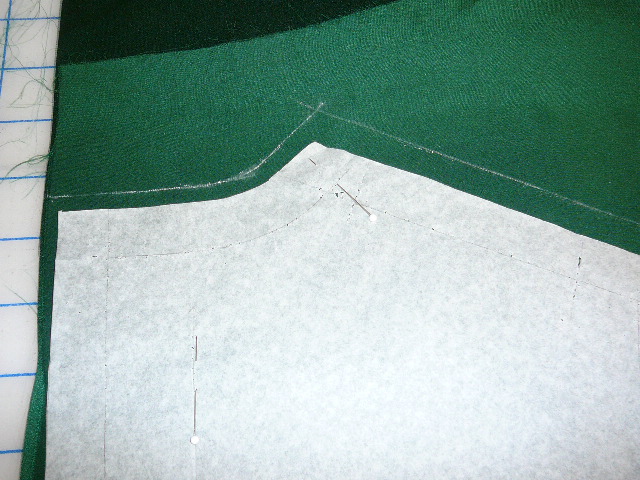
Increasing the seam allowances
Use the same pattern pieces for the fabric and the lining, but increase the seam allowances to 1" for the fashion fabric and 1 1/2" for the lining. This is important because even though the garment is fit in muslin, your actual garment may require further tweaking with the fit, depending on the characteristics of the fabric. Also, tweed and bouclé fabrics can sometimes unravel easily so having wider seam allowances will allow for some fraying. The extra seam allowance for the lining will be needed for the quilting technique.
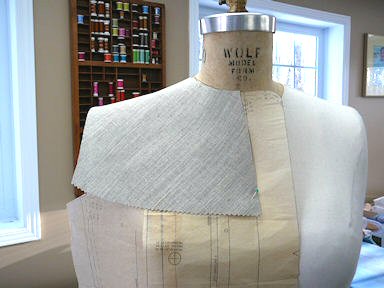
For my sample jacket I omitted the front facings and lined the garment to the edge. I added a 5" vent to the back sleeve seam and drafted my own pocket patterns.
I added a chest shield to the front of the garment to help support the fabric in the hollow above the bust.
To draft a chest shield, tissue fit the pattern on your body and pencil a curved line which ends just above the bust.
Trace this new pattern piece to a piece of paper. Use hair canvas for your chest shield and cut so that the grain line is on the bias at a 45 degree angle to center front.
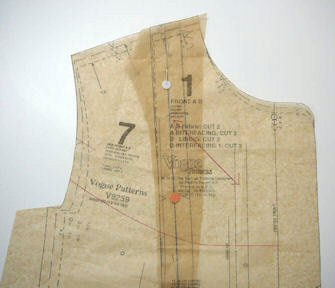
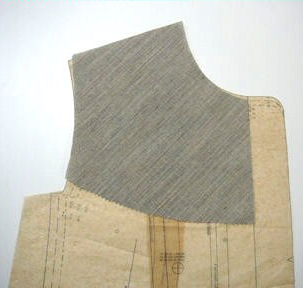

Light to medium weight bouclé and tweed fabrics are the traditional fabrics used for these jackets as they have a lot of texture that will help to hide the quilting lines used in the construction process. They also provide many possibilities in terms of trim. I have also seen some ready-to-wear jackets made out of very lightweight tweeds that have been quilted to silk mesh, so there are a wealth of options!
For lining, silk charmeuse would be the ultimate luxury fabric, but crepe de chine or silk habotai (China silk) are also great options. Some silks can bleed during the cleaning process. If in doubt, speak with your dry cleaner and possibly give him a swatch of lining sewn to a piece of fabric to test clean. I have done this in the past and while it came out fine, it was worth the peace of mind before I started construction.
Although my original vintage Chanel quilted jacket does not have any interfacing in it, I added lightweight hair canvas to the hems, pockets, fronts of the jacket to support the buttons and buttonholes, and to create a chest shield.

